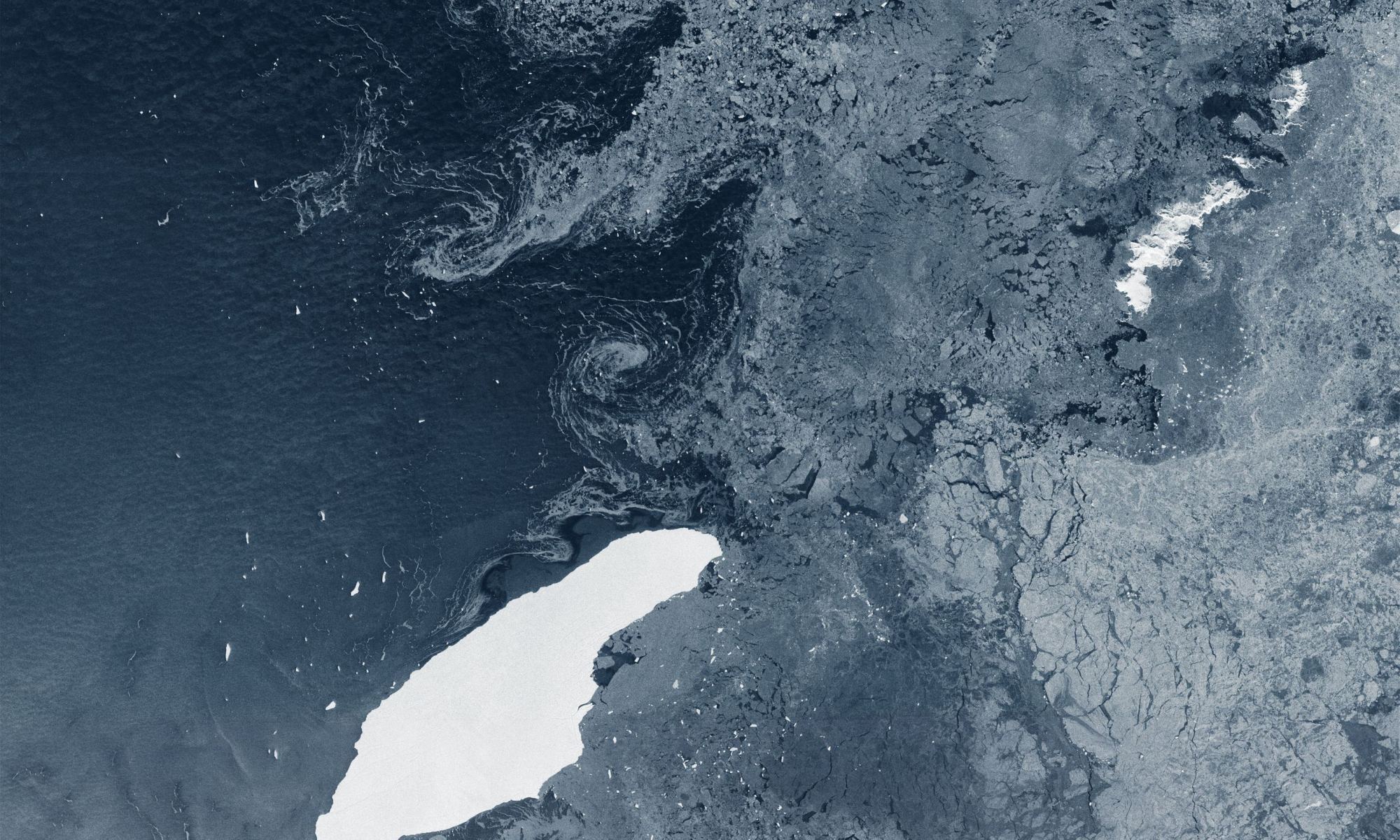An iceberg that calved off of from a larger ice formation has spent three years floating on the ocean near Antarctica. The iceberg broke off of the Larsen Ice Shelf in mid-July 2017. It’s been battered and split up into three pieces, but it’s still going.
In July 2017, satellites spotted the calving event, as the trillion-ton iceberg split off from the floating Larsen Ice Shelf in Antarctica. Satellites had been watching the imminent split for a while, as the crack grew over the course of several years. The iceberg, named A68, was the size of the state of Delaware, or twice the size of Luxembourg.
Given the huge size of A68, satellites have had no problem tracking it as it floated around near Antarctica. They tracked it as it lost two chunks: A68-B in July 2017, and A68-C in April 2020.
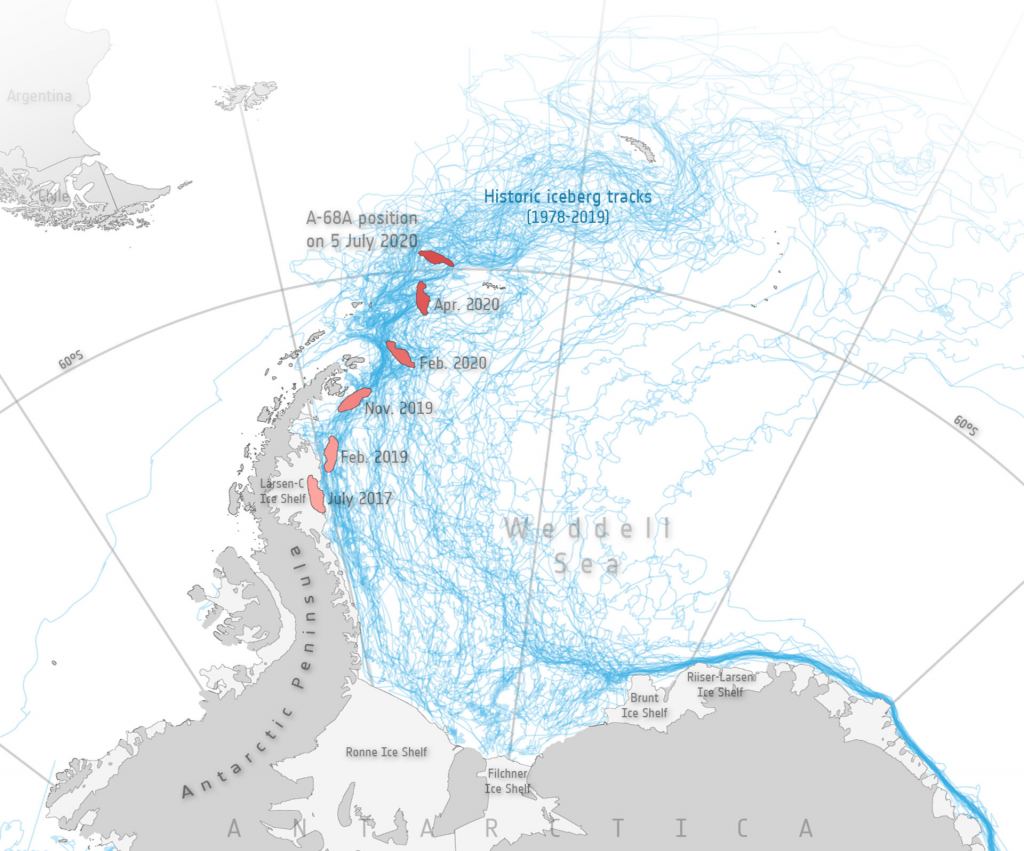
The ESA’s Copernicus Sentinel-1 mission has kept its eyes on the iceberg over the years. Sentinel-1 is actually two satellites, both in polar orbits around Earth. Sentinel-1’s primary mission is to provide continuous radar mapping of the Earth. The mission covers the entire world’s land masses every two weeks.
When it broke off from Antarctica, A68 was one of the largest icebergs on record. For the first couple years, it remained pretty close to the Antarctic Peninsula, as sea ice kept it relatively contained. Now, it’s drifting further and further away.
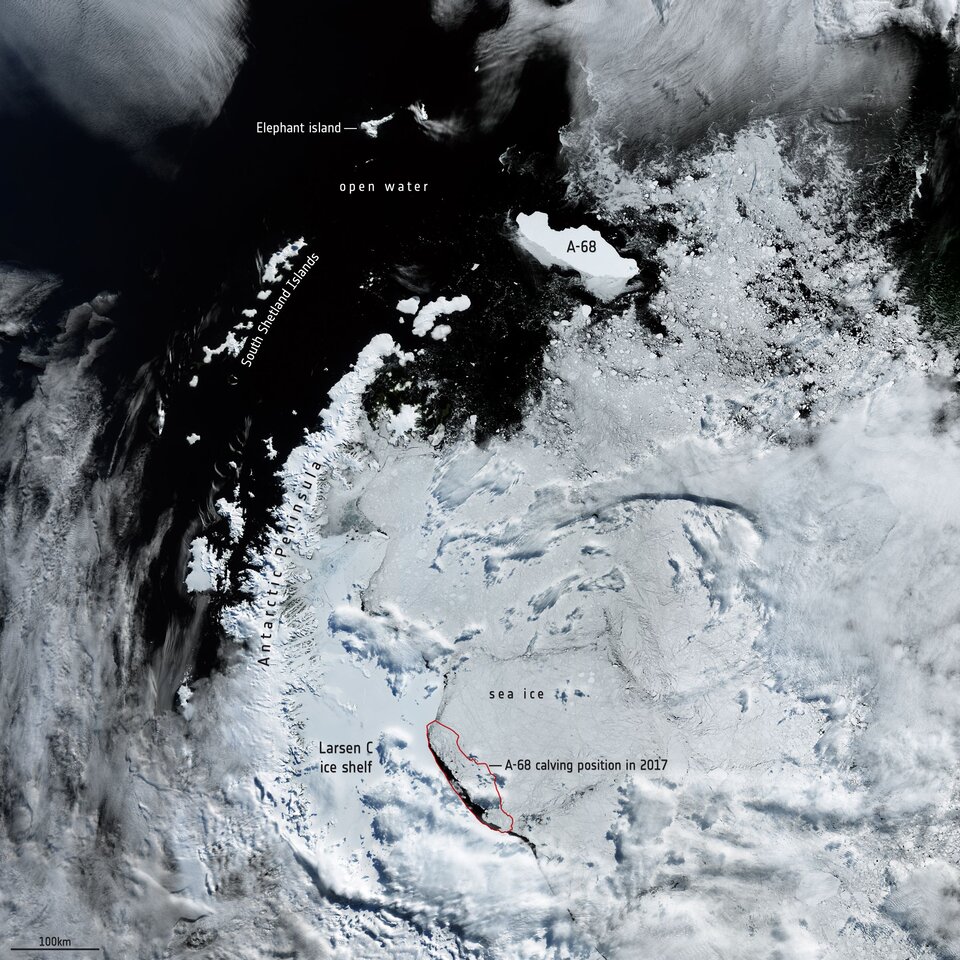
A68-A is actually thin for an iceberg this size. So in a sense, even though two chunks have broken off, it’s holding together pretty well. The storms in this part of the world are intense, and the nearby Drake Passage is considered the roughest sea on Earth by some.
The Sentinel-1 satellites don’t take visible light images. Instead, they use radar to monitor the world. That means that even in the Antarctica’s winter, where it can be dark for 24 hours, and even through the worst cloud cover and storms, they can still track the iceberg.
Even though A68-A has survived for three years, it’s fate is certain. It’ll eventually break into smaller pieces and disappear. But one question concerning the iceberg itself is if climate change played a role in its calving.
Calving is normal, and the Antarctica Ice Shelves are a complicated system. It’s difficult to peg any single iceberg to climate change. But then again, the ice in Antarctica isn’t immune to global climate change. Different types of cracks form in different locations in the ice shelf, and researchers think some are climate change related.
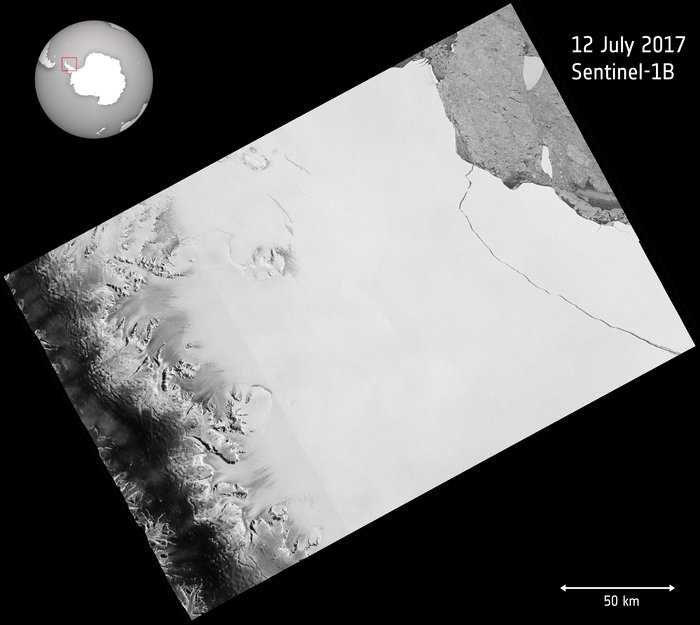
David Vaughan is a glaciologist and Director of Science at the British Antarctic Survey. Back in 2017, when the iceberg first broke off, Vaughan commented on the calving: “Larsen C itself might be a result of climate change, but, in other ice shelves we see cracks forming, which we don’t believe have any connection to climate change. For instance on the Brunt Ice Shelf where BAS has its Halley Station, there those cracks are a very different kind which we don’t believe have any connection to climate change.”
Three years sounds like a long time for an iceberg to drift. But back in 2018 astronauts on the ISS spotted an iceberg that had been floating for 18 long years. It broke off from the Ross Ice Shelf, the largest shelf in Antarctica.
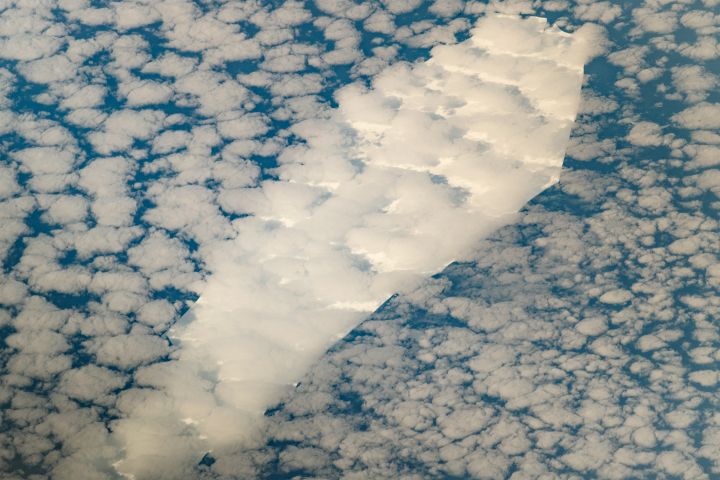
Icebergs calve off of huge ice formations called ice shelves. The Larsen Ice Shelf that spawned A68 is on the Antarctic Peninsula, and is one of the contintent’s smaller ice shelves. Overall, the ice shelves in both the Arctic and Antarctic are experiencing more calving and disintegration. While calving is normal, ice shelf collapses are much more rapid, and are a symptom of climate change.

More:
- Press Release: Giant A-68 iceberg three years on
- NASA Global Climate Change: Ice Sheets
- Universe Today: This is What Icebergs Look Like at the End of Their Lives. This One’s 18 Years Old

